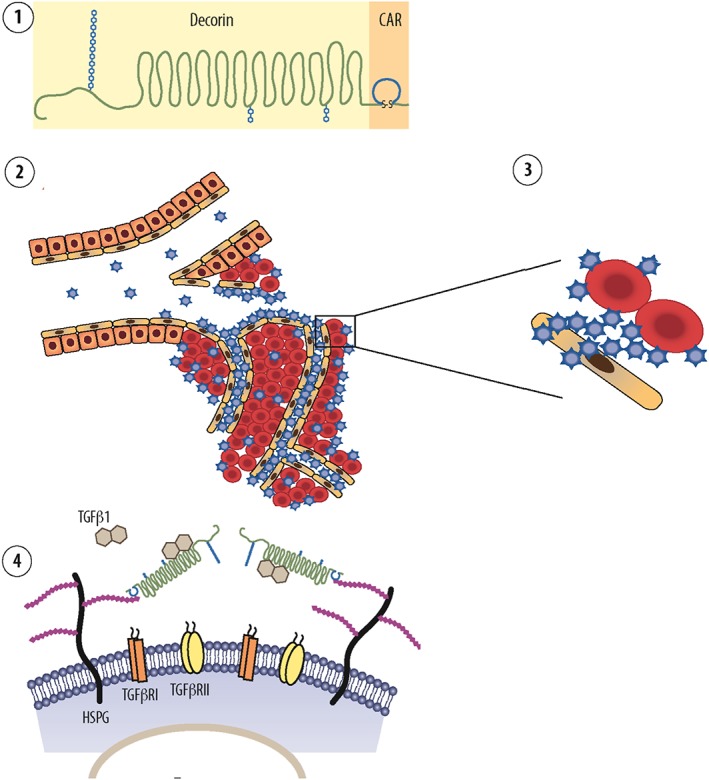Figure 3.

Mechanism of action of multi‐functional re‐engineered decorin in inhibition of scar formation. The diagram shows the recombinant fusion protein consisting of decorin and the vascular homing and cell‐penetrating peptide CAR. The CAR‐DCN ① is a multifunctional biotherapeutic agent that inhibits numerous growth factor signalling pathways involved in fibrosis. The systemically administered molecule is targeted by CAR peptide to the inflammatory or angiogenic vasculature in any organ of the body ②. The CAR homing peptide binds to its receptor (‘zip code’) in angiogenic or inflammatory vasculature ②, and as a cell‐penetrating peptide, it delivers the fusion molecule deep in the target organ parenchyme ③. The CAR peptide then binds to heparin sulfate proteoglycans on the cell surface of the stromal cells ③. This binding facilitates the neutralization of scar‐forming isoforms TGF‐β1 and ‐β2 by the therapeutic part of the molecule, DCN ④. This mechanism results in a therapeutic response, that is, reduction of scar formation in skin wound. Diagram by Helena Schmidt; reproduced with permission from Finnish Medical Journal Duodecim (originally published in Duodecim, 2011, 127: 50–51).
